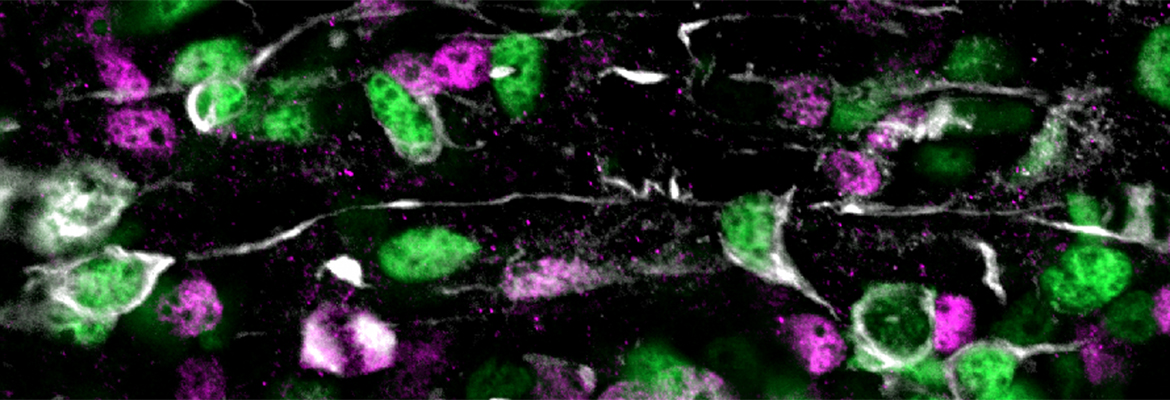Research

During development, the cerebral cortex contains diverse types of neural stem cells, which are differentially stained with Sox2 (green), Tbr2 (pink), and phospho-Vimentin (white). Adapted from Johnson et al. (2018).
We aim to understand the molecular and cellular mechanisms underlying human cerebral cortical development. Occupying 82% of brain volume, the cerebral cortex is the largest part of the human brain with a highly gyrified surface and multiple functional areas. It mediates cognitive functions pronounced in humans, such as language and abstract thinking. Thus, the mechanism by which the cortex develops to form the structural basis for cognitive functions is an important problem in biology. Furthermore, abnormal cortical development is implicated in neurological disorders including microcephaly (“small brain”) with intellectual disability, and psychiatric disorders including autism spectrum disorder with an abnormally large prefrontal cortex. However, the current mechanistic understanding of human cortical development is limited due to the scarcity of rigorous cell and animal models.
Our unique approach is to compare humans, ferrets, and mice with the same genetic mutation but with strikingly different phenotypes using state-of-the-art tools in molecular biology, biochemistry and cell biology. Since ferrets recapitulate human cortical development more rigorously than mice at the molecular, cellular, and anatomical levels, our approach will provide novel and relevant insights into human cortical development. Currently, we are focusing on how centrosomal proteins regulate cortical size in health and disease.
For more details on research projects, please contact Byoung-Il Bae directly.